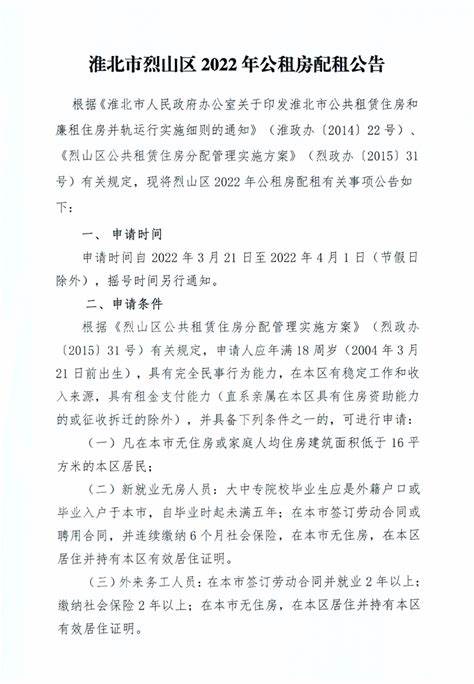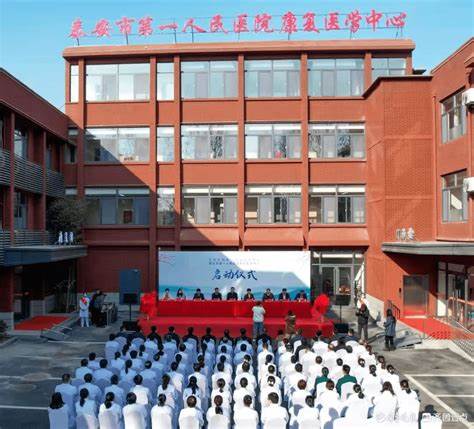红河天气今日最高温度
发布:杨仲勋
- 1、The temperature in Vietnam for 12 months of the year
- 2、What are the climatic conditions like in Luxi County, Honghe Prefecture, Yunnan Province?
- 3、Vietnam's largest river
The temperature of Vietnam for 12 months of the year is as follows:
1. The temperature in January is the daily maximum temperature of 25°C. The average minimum temperature is 17℃.
The temperature in February is the average daily maximum temperature of 26℃ and the average daily minimum temperature of 18℃.
The temperature in March is an average daily maximum temperature of 29℃ and an average daily minimum temperature of 20℃.
The temperature in April is the average daily maximum temperature of 31℃ and the average daily minimum temperature of 21℃.
The temperature in May is the average daily maximum temperature of 33℃ and the average daily minimum temperature of 23℃.
The temperature in June and June is the average daily maximum temperature of 33℃ and the average daily minimum temperature of 23℃.
The temperature in July and July is the average daily maximum temperature of 33℃ and the average daily minimum temperature of 23℃.
The temperature in August and August is the average daily maximum temperature of 33℃ and the average daily minimum temperature of 23℃.
The temperature in September and September is the average daily maximum temperature of 31℃ and the average daily minimum temperature of 22℃.
The temperature in October and October is the average daily maximum temperature of 30℃ and the average daily minimum temperature of 20℃.
The temperature in November and November is the average daily maximum temperature of 27℃ and the average daily minimum temperature of 19℃.
The temperature in December and December is the average daily maximum temperature of 25℃ and the average daily minimum temperature of 17℃.
Introduction to the geographical environment of Vietnam:
1. Highlands
The highlands and plateaus in northern and northwest Vietnam are mainly populated by a small number of residents. Ethnic tribes. From Tibet and Yunnan Province in southwestern China, they form Vietnam's borders with Laos and Cambodia. It ends in the Mekong Delta, north of Ho Chi Minh City (formerly Saigon). In the central mountainous area, there are several plateaus with undulating heights and irregular shapes. The northern part of the mountain is narrow and very rugged; Vietnam's highest peak, Fan Si Pan, is located at the northwest end and is 3,142 meters high.
2. The Red River Delta
It is a flat triangular area with an area of 3,000 square kilometers. It is smaller than the Mekong Delta, but it was developed earlier and has a high population density. It used to be a harbor in the Beibu Gulf, but it has been gradually filled by a huge amount of river alluvial deposits over thousands of years, advancing 100 meters into the Beibu Gulf every year. The Red River Delta is the ancestral home of the Vietnamese nation. Before 1975, 70% of agriculture and 80% of industry in northern Vietnam were concentrated in the Red River Delta.
Reference for the above content: Baidu Encyclopedia-Vietnam

Luxi County is located on a low-latitude plateau, with obvious differences in the vertical distribution of heat, and belongs to the north subtropical monsoon climate zone. However, due to the complex terrain, there is actually a three-dimensional climate type in which subtropical and temperate zones coexist. From the heat standard analysis of ≥10℃ accumulated temperature, there are five climate types vertically distributed in the county: south subtropical zone, middle subtropical zone, north subtropical zone, south temperate zone and mid-temperate zone.
From the alpine mountainous area with an altitude of 2200-2460 meters to the mountainous area with an altitude of 1900-2200 meters, from the dam area with an altitude of 1300-1900 meters to the valley area with an altitude of 821-1300 meters, the climate differs greatly, forming a cold and cold climate. , four climate types: mild, warm and hot. Valley areas below 1,100 meters above sea level have a south subtropical climate with an accumulated temperature of ≥10°C and above 6,000°C; areas with an altitude of 1,100-1,500 meters have a mid-subtropical climate with an accumulated temperature of ≥10°C between 5,300 and 6,000°C; those with an altitude of 1,500 In the area with an altitude of -1800 meters, the accumulated temperature of ≥10℃ is between 4250-5300℃, which belongs to the northern subtropical climate; in the area with an altitude of 1800-2200 meters, the accumulated temperature of ≥10℃ is between 3200-4250℃, which belongs to the southern temperate zone climate; In areas above 2,200 meters above sea level, the accumulated temperature ≥10°C is less than 3,200°C, indicating a mid-temperate climate.
The climate characteristics of the county are generally dry and wet, with rainy summers and dry winters. In addition to seasonal changes, the climate also has local differences due to differences in altitude and terrain. In winter ( Dry season) is mainly controlled by the westerly circulation. It has less traffic, sufficient sunshine, high temperature, less rainfall, low temperature, high wind speed and sunny weather. These are the climate characteristics of the dry season. However, it is also often affected by polar cold air masses and southeastern returning airflow. , there are sometimes cold and light rainy weather. Summer (rainy season) is mainly controlled by the southwest moist air flow, which comes from the Bay of Bengal in the Indian Ocean. There is abundant water vapor, resulting in large amounts of rainfall (sometimes it is also affected by the warm and moist air flow in the southeastern North Bay). During this period, the weather is often cloudy and the amount of solar radiation reaching the ground is small. However, due to sufficient water, large evaporation and high heat consumption, the temperature does not rise very high. Therefore, the climate in the county is mild, with no scorching heat in summer and no heat in winter. No severe cold. The annual temperature difference is large. The temperature in summer is not high, and autumn is prone to low temperature and cold damage.

The Red River, a cross-border water system originating from Yunnan Province in China, spre ads across northern Vietnam. With its significant runoff and important geographical location, it plays a very important role in Vietnam's geography and culture. status. The following is a detailed introduction to the Red River:
1.**Geographical Features**
-**Source Location**: The source of the Red River is located in the central area of Yunnan Province, China. There, it was called Nguyen Giang, and as the terrain undulated, it crossed several provinces and eventually flowed into Vietnam.
-**Meandering flow**: The Red River meanders from its source to the southeast, running through the northern region of Vietnam, bringing fertile soil and abundant water to the land there.
-**Color Characteristics**: The Red River is named because the basin it flows through is mostly composed of red sandy shale formations. The iron components in these formations are oxidized and dissolved in the river water. The river water has a unique red color.
2.**Cultural Significance**
-**Civilization Impact**: The Red River is not only the largest river in Vietnam, but also the cradle of ancient Vietnamese civilization. The development history of the coastal areas is closely related to this river, and its existence has an immeasurable impact on the historical development of Vietnam.
-**Economic Life**: The land in the Red River Basin has become extremely suitable for farming due to the fertile silt brought by the river, which provides sufficient food sources and economic security for the lives of local residents.
3.**Community Environment**
-**Agricultural Development**: Agriculture in the area around the Red River benefits from the nourishment of the river, making this area one of the important agricultural bases in Vietnam.
-**Fishery Resources**: In addition to agriculture, the rich waters of the Red River also provide good conditions for fishery, becoming an important source of food and income for local residents.
-**Ecological environment**: As an important natural water body, the Red River bears the important task of maintaining ecological balance. Its health directly affects the stability of the surrounding ecosystem.
4.**Social Impact**
-**Transportation**: As an important waterway, the Red River plays an indispensable role in Vietnam's transportation and material transportation.
-**Tourism resources**: The natural scenery along the Red River and the long history it carries have attracted many tourists for sightseeing and promoted the development of local tourism.
-**Cultural Exchange**: The river has become a bridge for communication between different cultures. The residents of the Red River Basin use this river to communicate with the outside world in material and ideological ways.
5.**Economic Value**
-**Hydropower Development**: The water flow of the Red River provides the possibility of hydropower generation, which has a profound impact on Vietnam's energy structure.
-**Irrigation System**: The irrigation system in the Red River Basin supports local agricultural production and ensures stable output of crops.
-**Industrial water**: In terms of industry, the water resources of the Red River have also become an indispensable part of industrial production, especially in some industrial fields that have higher water quality requirements.
6.**Modern Challenges**
-**Pollution Problems**: With the acceleration of industrialization and urbanization, the Red River is facing increasingly severe pollution problems and requires more effective environmental protection measures. to cope.
-**Ecological damage**: Due to excessive fishing, hunting and industrial activities, the ecological environment of the Red River has been damaged to a certain extent, and protection and restoration work is urgent.
-**Climate Change**: The frequent occurrence of extreme weather events caused by global climate change has brought new challenges to the lives of residents in the Red River Basin.
It is worth mentioning that the unique geographical characteristics and biodiversity of the Red River Basin, while paying attention to ecological protection, should also pay attention to the following matters:
-Strengthen the supervision of environmental pollution in the Red River Basin to ensure water quality safety and cleanliness.
-Take measures to protect the natural ecology around rivers and pre vent over-exploitation and irrational use of resources.
-Improve the adaptability of local residents to the impact of climate change and reduce losses caused by natural disasters.
-Promote cooperation among riparian countries to jointly manage this transnational river and achieve regional sustainable development.
To sum up, the Red River, as the largest river in Vietnam, not only occupies an important geographical position, but also plays a vital role in many aspects such as culture, economy, society and environment. For Vietnam and the entire Southeast Asia region, the Red River's value goes far beyond its significance as a river.

以上就是关于红河天气今日最高温度的全部内容,希望能够帮到您。
版权声明:本文来自用户投稿,不代表【大桂阳分类信息】立场,本平台所发表的文章、图片属于原权利人所有,因客观原因,或会存在不当使用的情况,非恶意侵犯原权利人相关权益,敬请相关权利人谅解并与我们联系,我们将及时处理,共同维护良好的网络创作环境。
大家都在看
-

沭阳教师招聘信息最新招聘2023
2023江苏宿迁沭阳事业单位教师招聘报名条件2023年江苏宿川朔阳事业单位教师招聘要求:具体条件:1.双一流综合性大学2023年毕业,获通识学士学位。就是做这件事的。
-

九江一月的天气温度
江西九江元月20日至元月30日天气江辰、王石攻九江第一孝艺师:九江11月至1月天气怎样有时会下雪。去年我们感觉不太
-

石家庄2022年公租房的新政策
公租房的新政策如下:1、均月收入低于3300元的住房困难家庭,可申请公租房货币化补贴。2、公租房货币化补贴,有其严格的计算公式——“补贴额度计算公式:货币化补贴额度=补贴面
-

泰安岱岳区教师2022年招聘
泰安一中哪一年不再招岱岳区2022年,泰安为山东下辖。2022年,山东泰安一中不再招收岱岳区学生。第一中学位于山东泰安,是山东一所中心中学,也是山东首批19所
-

山西阳泉未来15天天气
阳泉天气穿什么合适建议穿着轻便夹克或牛仔裤等服装。阳泉属温暖半湿润大陆性季风气候区。不同地区气候差异较大,受降雨影响,地形复杂。总体特点是:冬夏,春秋短,
-

苏州今天天气24小时预报
白天苏州多云转晴,轻度污染,最高气温6度,晚上西北风转西风3-4级,最低气温零下一度。
-

2020年5月份天气怎样
2020年5月北京雷雨天气预报北京雷雨天气航班延误情况如果你刚刚看了热搜,你就知道北京这里已经开始雷阵雨了,而且是一场大雨。它在一瞬间到来。相信大家都措手不及。我们先
-

2024年公租房公示名单昆明
2024年公租房申请时间公共租赁住房申请周期如下:一、公共租赁住房申请初审时间为自收到申请之日起20个工作日,请您在向租赁住房管理提出申请前准备好全部申请材料。二、申请
-

2023平顶山郏招聘小学教师
河南平顶山郏高考成绩出来了吗?至2023年6月27日;该席位的高考成绩已经出炉。根据河南教育公布的2023年河南高考成绩公示,2023年河南平顶山高考成绩已公布。将于6月25日
-

2020济宁教师招聘汇总
2020济宁汶上教师招聘笔试考什么?(一)笔试测试由公共基础知识和基础教学知识(包括教育、心理学等专业知识)两部分组成,分别占总成绩的30%和70%分别。。为保证新录用员的
